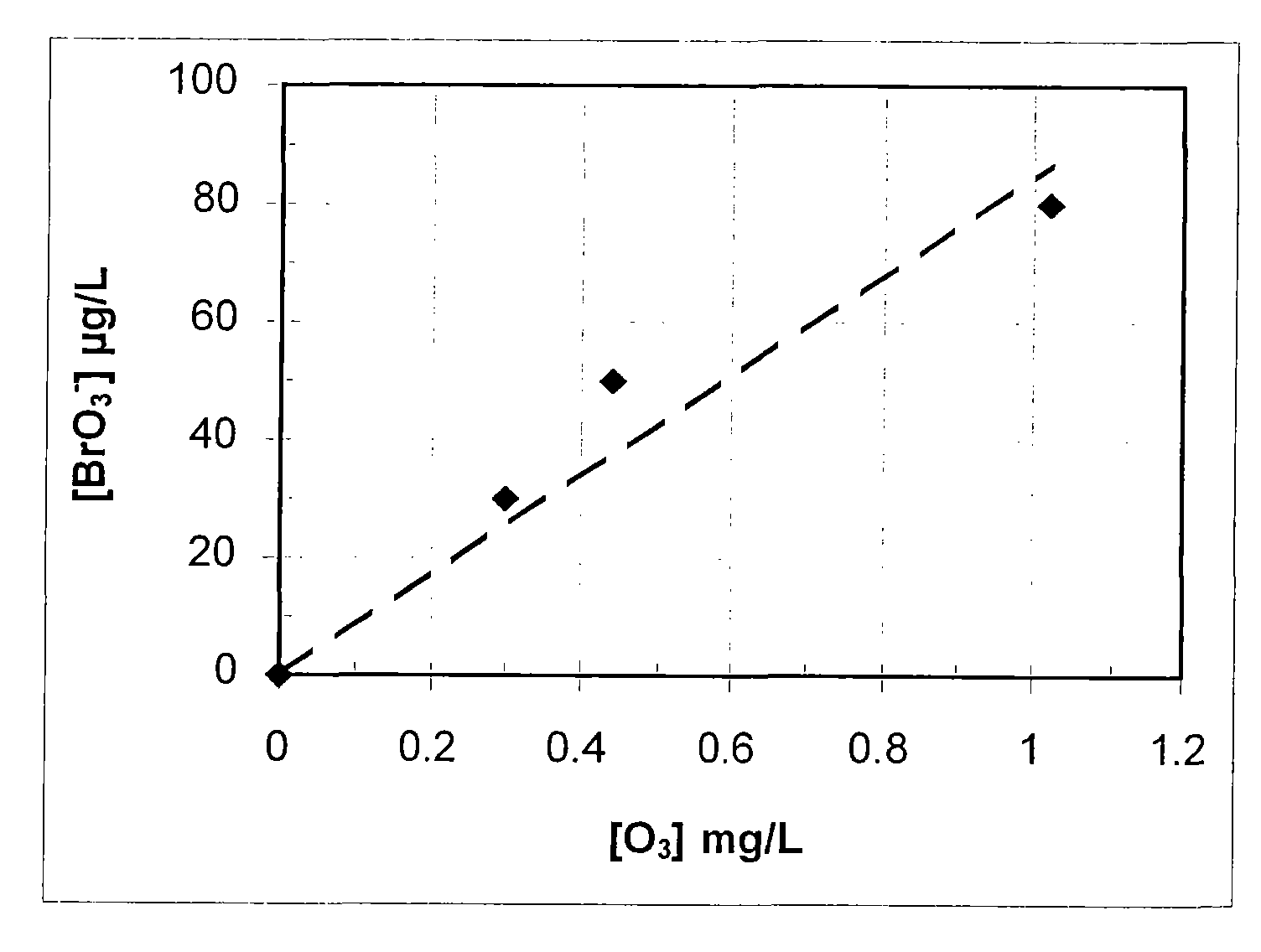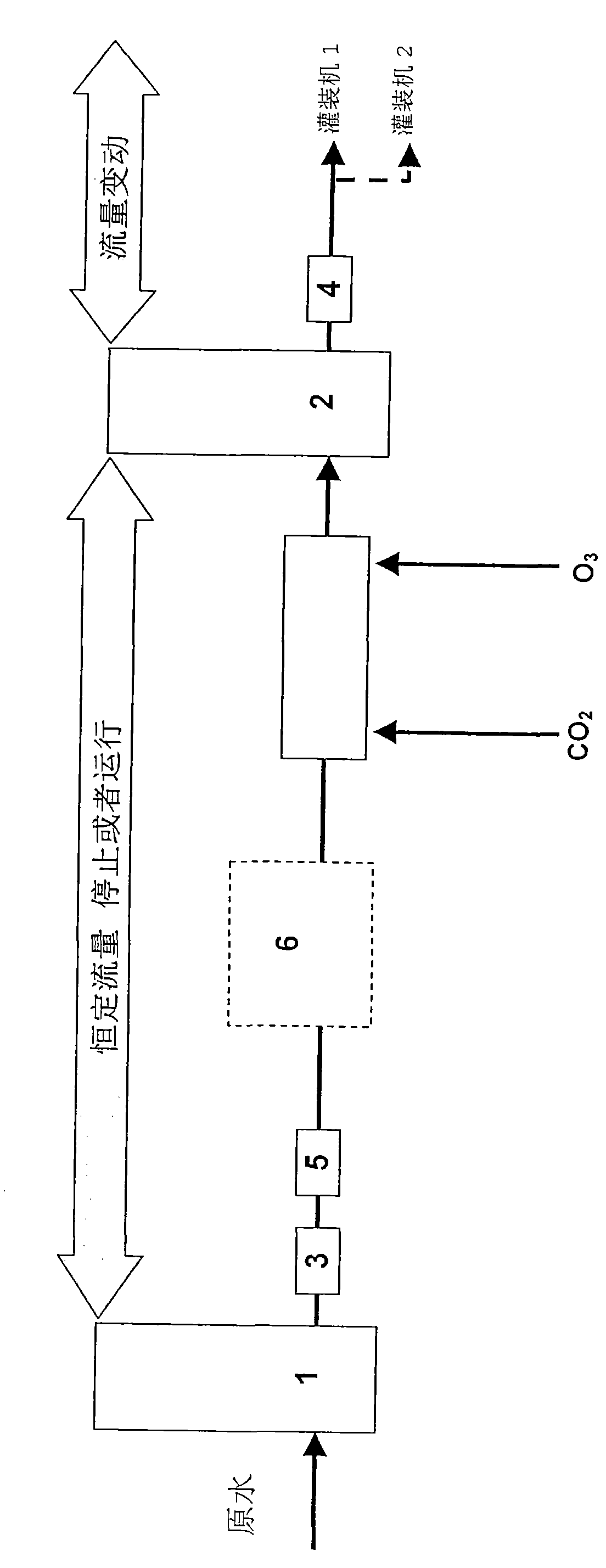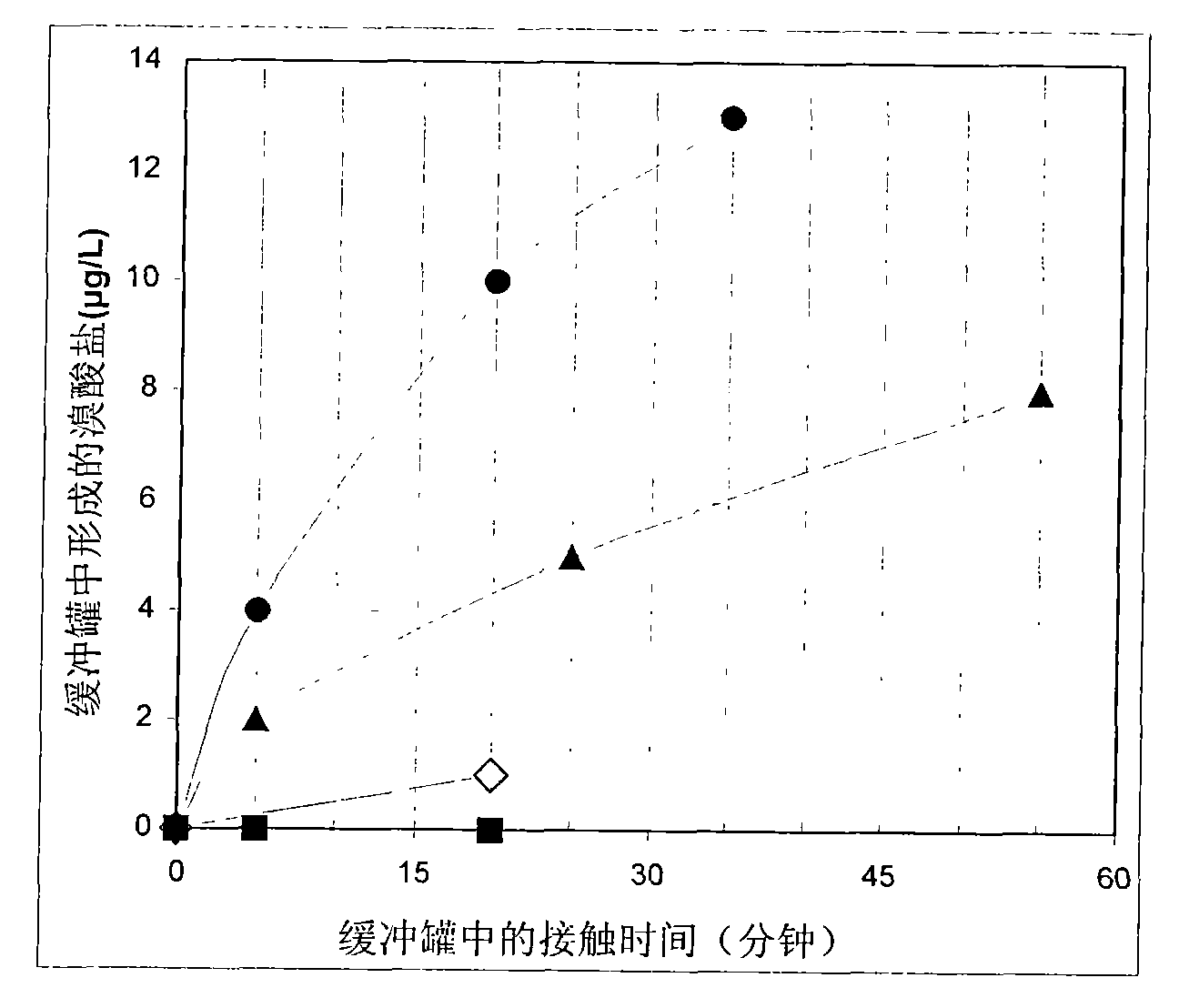Process for producing bottled water sterilized by ozone and sterilized bottled water
A technology for ozone disinfection and bottled water, which is applied in oxidation water/sewage treatment, ozone preparation, water/sewage treatment, etc., and can solve the problems of impossible removal, secondary water pollution, ozone decomposition, etc.
- Summary
- Abstract
- Description
- Claims
- Application Information
AI Technical Summary
Problems solved by technology
Method used
Image
Examples
Embodiment 1
[0099] Embodiment 1: be used for the method for disinfection Protosalis F, H and I
[0100] Salicam F, H and I were bottled in different types of bottles in three different bottled water production units equipped with the same disinfection method, illustrated in Figure 10 middle. For each type of water, raw water is pumped from the well to the raw water tank (1). The water pump (3) supplies water to the buffer tank (2) at a constant flow rate. After (3), in order to inhale carbon dioxide at a constant flow, part of the water is diverted to the water pump (13), whose function is to generate a constant water flow through the venturi (14). Static mixer (15) mixes CO 2 and water, the static mixer (10) mixes the diverted water with the remainder of the main stream. After (10), part of the water is diverted to a flow meter (107), which monitors the water flow generated by the gas-liquid mixing pump (7). An ozone generator (101) fed with air generates ozone. Ozone flow is mo...
Embodiment 2
[0104] Embodiment 2: the method for disinfection raw water sample E
[0105] In the experiment of Example 2, the water sample E was filled in a 1500mL PET bottle. During the experiment, the natural CO in water sample E 2 The content is 5-15mg / L, without adding CO 2 , the pH was maintained at 7.1-7.3. use Figure 11 Illustrated bottled water production plant for ozonation. Raw water is stored in the raw water tank (1) and is pumped to the buffer tank (2) with a centrifugal pump (3) in stop and run mode. In order for the Venturi (7) to generate constant suction, a portion of the water is diverted from the mains flow to the pump (108). Ozone is generated from air by a vacuum type ozone generator (101), and the generated ozone is delivered to the Venturi when the Venturi is sucked. A check valve (106) is installed to prevent water from entering the ozone line when the venturi is not pumping. After ozone injection, the water of the branch stream mixes with the water of the...
Embodiment 3
[0109] Embodiment 3: the method for disinfection raw water sample E
[0110] The experiment of Example 2 was repeated during the 21 hours, recording the level of ozone in the finished product immediately after filling and the level of bromate in the finished product as in Figure 12 shown in . Ozone levels in the bottles were the target level of 0.10 ± 0.05 mg / L during the entire time period, resulting in bromate at safe levels (90% of the results were below 5 μg / L.
PUM
 Login to View More
Login to View More Abstract
Description
Claims
Application Information
 Login to View More
Login to View More - R&D
- Intellectual Property
- Life Sciences
- Materials
- Tech Scout
- Unparalleled Data Quality
- Higher Quality Content
- 60% Fewer Hallucinations
Browse by: Latest US Patents, China's latest patents, Technical Efficacy Thesaurus, Application Domain, Technology Topic, Popular Technical Reports.
© 2025 PatSnap. All rights reserved.Legal|Privacy policy|Modern Slavery Act Transparency Statement|Sitemap|About US| Contact US: help@patsnap.com



